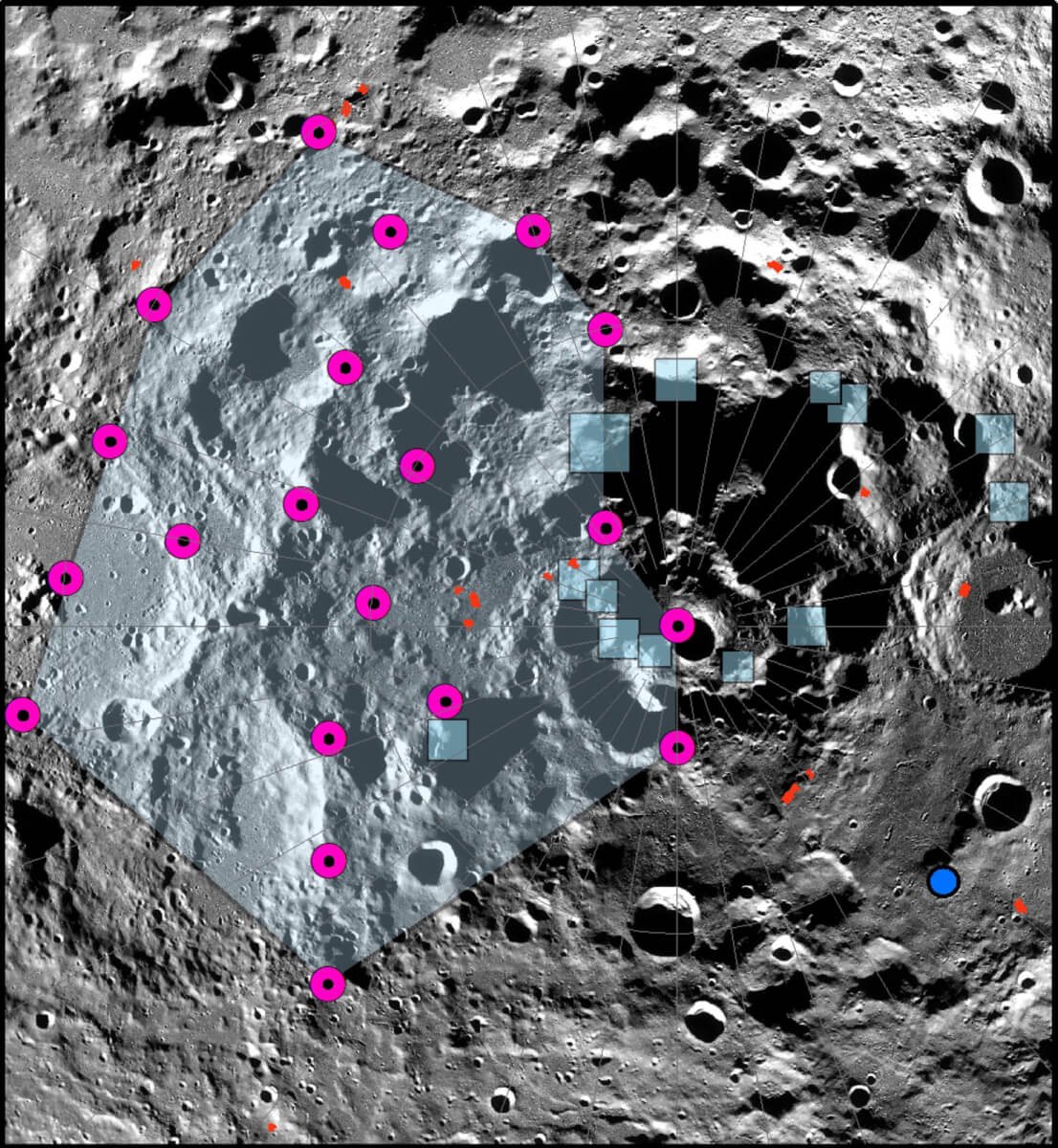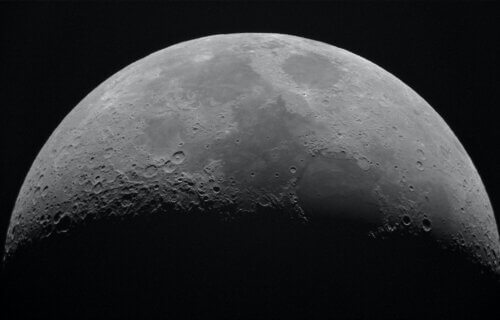COLLEGE PARK, Md. — The Moon may be a little less “full” the next time you see it in the night sky. Researchers from the University of Maryland reveal that the Moon has been gradually shrinking, much like a grape turning into a raisin, causing its surface to wrinkle and form faults. Over the past few hundred million years, the Moon has lost more than 150 feet in circumference as its core cooled down.
Scientists are linking these changes to potential risks for NASA’s upcoming Artemis III crewed landings, particularly in the Moon’s south polar region. The study reveals that the Moon’s shrinkage could lead to significant surface warping and seismic activities, known as moonquakes, which pose a threat to future human exploration.
“Our modeling suggests that shallow moonquakes capable of producing strong ground shaking in the south polar region are possible from slip events on existing faults or the formation of new thrust faults,” says study lead author Thomas R. Watters, a senior scientist emeritus in the National Air and Space Museum’s Center for Earth and Planetary Studies, in a university release. “The global distribution of young thrust faults, their potential to be active and the potential to form new thrust faults from ongoing global contraction should be considered when planning the location and stability of permanent outposts on the moon.”

Unlike earthquakes on Earth, shallow moonquakes occur just a few hundred miles beneath the surface and can last for hours. This prolonged seismic activity, combined with the Moon’s dry, gravel-like surface, increases the risk of landslides and structural damage to potential human settlements. Researchers connected a powerful moonquake recorded over 50 years ago by Apollo seismometers to a group of faults recently detected by the Lunar Reconnaissance Orbiter.
“Over billions of years, the surface has been hit by asteroids and comets, with the resulting angular fragments constantly getting ejected from the impacts,” explains study co-author Nicholas Schmerr, an associate professor of geology at the University of Maryland. “As a result, the reworked surface material can be micron-sized to boulder-sized, but all very loosely consolidated. Loose sediments make it very possible for shaking and landslides to occur.”
The study highlights the importance of considering lunar seismic activity when planning the location and stability of permanent outposts on the Moon. As NASA prepares for the Artemis missions, which aim to establish a long-term human presence on the moon, understanding and mitigating these risks becomes crucial.
See the ripples of a moonquake here:
“As we get closer to the crewed Artemis mission’s launch date, it’s important to keep our astronauts, our equipment and infrastructure as safe as possible,” notes Schmerr. “This work is helping us prepare for what awaits us on the moon — whether that’s engineering structures that can better withstand lunar seismic activity or protecting people from really dangerous zones.”
This research provides valuable insights into the moon’s evolving landscape and its implications for future moon-based observatories, outposts, and settlements, paving the way for safer and more effective human exploration of our celestial neighbor.
The study is published in The Planetary Science Journal.
